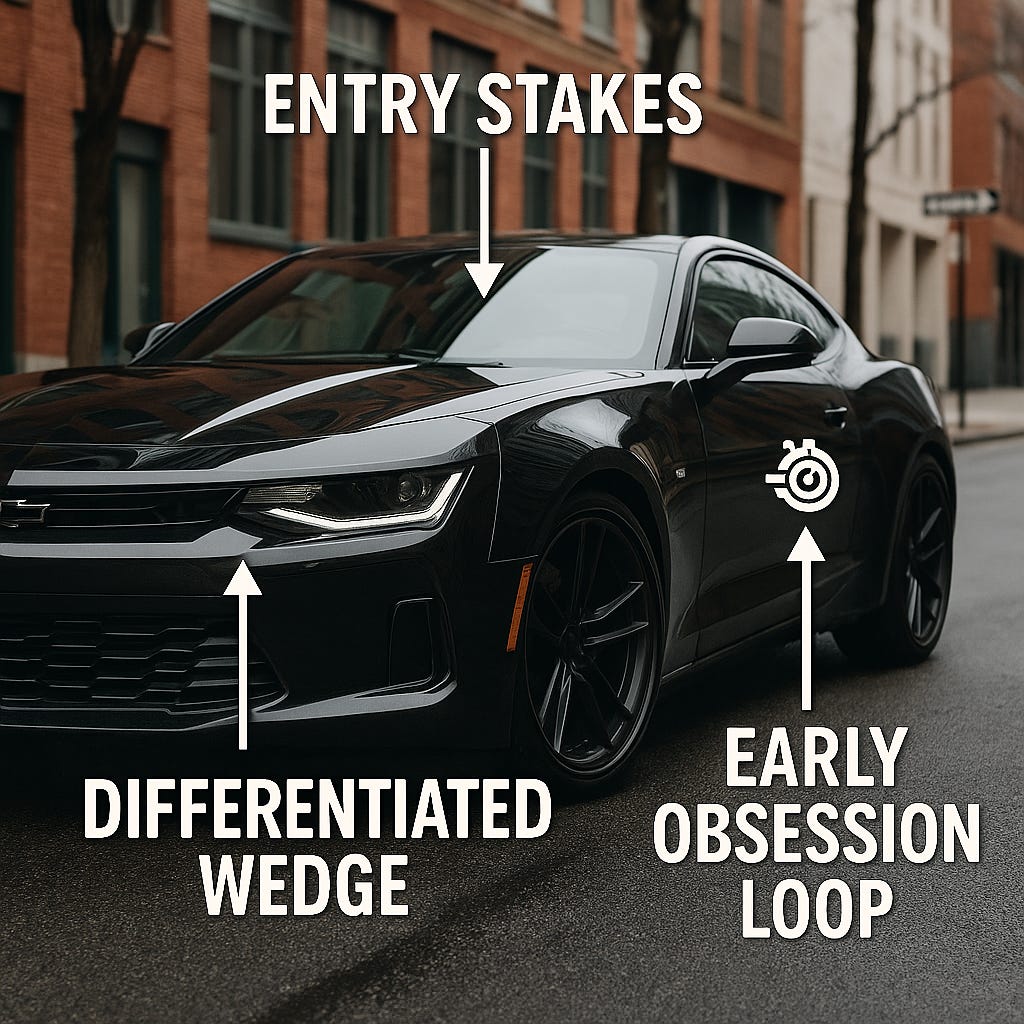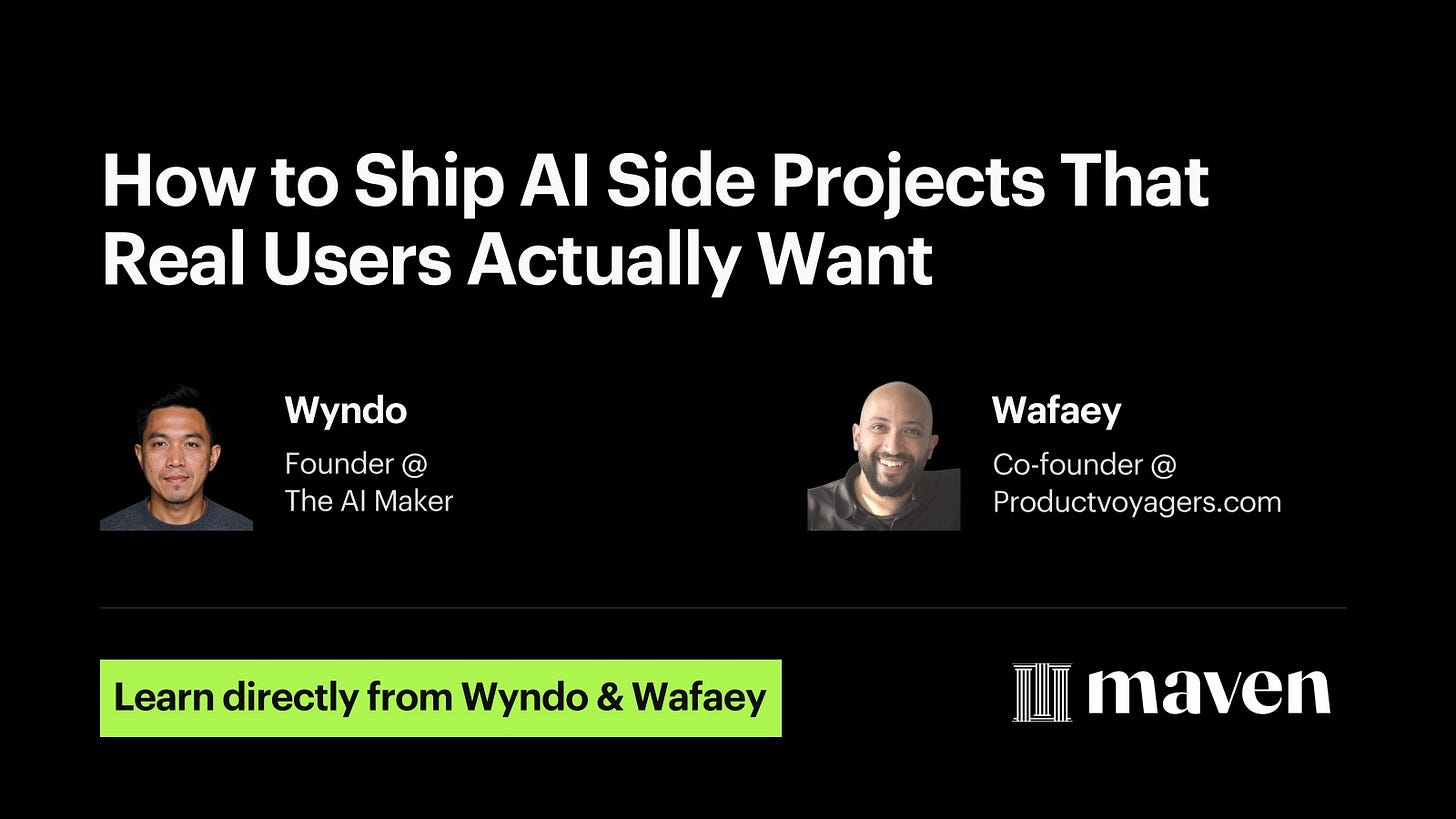Forget the MVP. Your First Product is a Bet.
A Founder's Guide to Building What Matters.
This is a open edition of The Product Voyagers. To unlock full playbooks, tools, templates and expert takes — go Prime and get everything in your inbox.
You have an idea. You’ve been told the next step is to build a "Minimum Viable Product" MVP. And so the agony begins.
You're trapped in endless debates over what "minimum" means. You/Your team is rushing a half-baked product into a crowded market where first impressions are final.
You're trying to test an idea, but a weak V1 doesn't get you feedback; it gets you ignored.
The MVP is a trap by its own.
It gives you the illusion of speed while leading you in the wrong direction.
Let's change the frame. You're not building a V1. You are making a bet. A single, focused, high-leverage bet on a specific outcome.
Your job isn't to ship a product;
it's to generate the clearest possible signal that your bet is paying off.
In this article, you will find a full guide to shaping that bet. Let’s dive deep 👇.
The Anatomy of Your First Bet
To place a smart bet, you need to be ruthlessly clear about its components. Every piece of your first product must serve one of three functions
#1. Entry Stakes (The Wheels)
These are the absolute, non-negotiable fundamentals. If you don't have them, you're not even in the game. Users expect them, and will only notice them if they're broken.
Think 👀: A way to log in. A button that saves. A screen that doesn't crash.
The Trap: Over-engineering the table stakes. For your first bet, the "wheels" might just be you manually onboarding users.
Your Job: Be ruthless. What is the absolute minimum required to function? Do that. No more. These are your what I name it “Minimum Actionable Standard”
#2. Differentiated Wedge (The Engine)
This is the core of your bet. This is your theory of victory. It’s the single dimension of performance where you are not just better, but different. This is your initial go-to-market wedge that opens up the market.
Think 👀: For a data tool, it’s not just speed, but the ability to query unstructured data. For a design tool, it’s not just the canvas, but native multiplayer collaboration.
The Trap: Spreading your bets. Trying to be faster and cheaper and have more features.
Your Job: Pick one vector of differentiation and aim to be world-class at it. This is where you focus your learning and development efforts. It's the hill you will win or die on.
#3. Early Obsession Loop (The Turbo Button)
This is the magic. The unexpected. The feature that makes a user stop, smile, and feel you get them. It’s the hook that creates your first believers and your most valuable feedback loop.
Think 👀: A tool that uses an AI call to auto-generate a perfect summary of a user's daily work, making them look like a rockstar to their boss.
The Trap: Mistaking a delighter for an engine. A turbo button is useless on a car that can't move.
Your Job: Find one small, clever way to create an emotional connection. This is often the perfect place to use an AI API an not as your core engine, but as a moment of high-leverage magic.
The Echo: What Happens After You Bet?
This is the part everyone gets wrong. Your first product isn't the end of the process; it's the start.
You've placed your bet. You've shipped your focused V1. Now you stop and listen for the echo.
The echo is the signal you get back from the market. It's not just support tickets and survey responses. It is the qualitative, messy, human feedback that tells you if your bet is resonating.
Is your Differentiated Wedge landing?
Are users talking about your "Engine" in the way you hoped? Is it changing their behavior?Is your Obsession Loop working?
Are people mentioning the "Turbo Button" when they recommend your product?Where is the friction?
What are the "good" problems you're seeing? (e.g., "We love it so much we need to invite more users," not "We don't understand how this works.")
Listening to the echo is not passive, however It's an active process of sense-making.
The answer to "What's next?" lies in the patterns of the echo and it informs your next bet, creating a continuous loop of 👇
Bet -> Ship -> Listen -> Learn -> Bet Again
Your Story Is Your Bet
Here's what I wish someone had told me when I was starting out: you don't need a perfect plan. You need a clear bet.
This anatomy is how you articulate that bet to investors, to your team, and to yourself. Remember: Your pitch and your action plan are two sides of the same coin.
A Real Test for You: Put Your Bet on the Table
If you're still debating your full feature list next Monday, the do the following
Open a blank document. Right now. Create three headings:
Entry Stakes
Differentiated Wedge
Early Obsession Loop.
Force every feature on your list into one of those buckets. If it doesn't fit, it goes into a fourth: Not Now.
Note: It’s not about organizing a backlog but It's about making a commitment to clarify your thinking so you can build the smallest, sharpest possible tool to ask a question of the market.
Bonus, If you’ve time
With that spirit; I'm teaming up with Wyndo, author of The AI Maker, for a live lightning deep dive: How to Ship AI Side Projects That Real Users Actually Want.
We plan to move beyond the theory and get our hands dirty. We'll explore the tricky terrain of AI-powered product development, focusing on how to:
Navigate common traps that cause most AI projects to disconnect from real value.
Map customer problems to viable prompts and AI capabilities.
Demoing with Claude's project knowledge features to integrate AI into your thinking process as a true sense-making partner.
We're running it live for those in the USA timezone. You can see the details and join us here.



